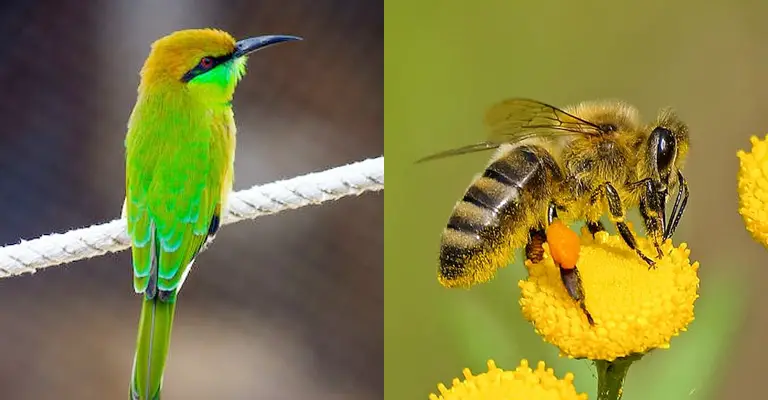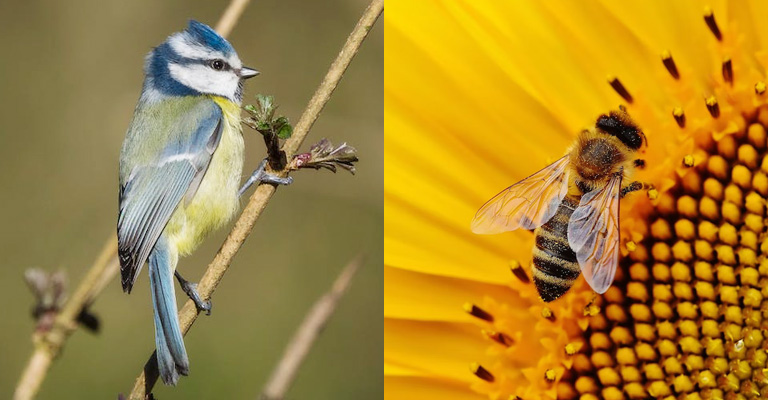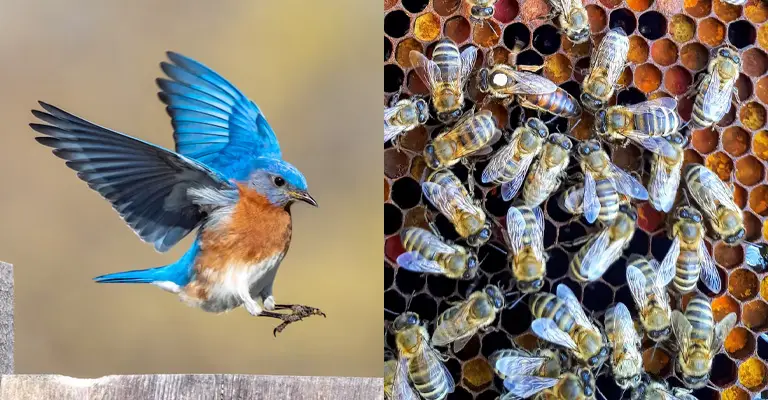Having conversations about the birds and bees with children can be both important and challenging for parents and caregivers. Explaining the facts of life in an age-appropriate and sensitive manner is crucial for their understanding and development.
This guide aims to provide practical advice and strategies for navigating ‘How do I explain the birds and bees.
From understanding the right time to broach the subject to using appropriate language and addressing questions, we explore effective ways to approach the birds and bees conversation.
By fostering open and honest communication, we can help children gain a healthy understanding of human reproduction, relationships, and consent. Remember, discussing the birds and bees is not a one-time event but an ongoing dialogue that evolves as children grow.
With the right tools and guidance, you can navigate this important aspect of your education with confidence and care.

How Do I Explain the Birds and Bees?
Explaining the birds and bees is a common way to discuss human reproduction and sexuality with children. Here’s a simple way to approach the topic:
Start by Assessing Your Child’s Understanding
Ask them what they already know about how babies are made. This will help you gauge their current knowledge and tailor your explanation accordingly.
Use Age-appropriate Language
Explain the topic in a way that is suitable for your child’s age and level of understanding. Use simple and clear language that they can easily comprehend.
Talk About the Basics
Begin by explaining that humans, like many other animals, have a special way of creating new life. Mention that it involves a man and a woman coming together in a special way.
Discuss Reproduction
Explain that the man has sperm and the woman has eggs. When the sperm and egg meet, they can join together and create a baby. Emphasize that this process is called fertilization.
Address Questions about Anatomy
If your child asks about body parts, use the correct names for male and female reproductive organs. Explain that the man’s reproductive organ is called a penis, and the woman’s is called a vagina.
Talk About Consent and Privacy
Teach your child about the importance of privacy and boundaries when it comes to their bodies. Emphasize that it is not appropriate for anyone to touch their private parts without their permission.
Answer Questions Honestly
Be prepared for follow-up questions and answer them honestly and age-appropriately. If you don’t know the answer, it’s okay to say that you’ll find out together or consult a trusted resource.
Encourage Open Communication
Let your child know that they can always come to you with questions about their bodies, relationships, or anything else they may be curious about. Create a safe and non-judgmental space for them to discuss these topics.
Remember, every child is different, so adapt your explanation to suit their individual needs and level of understanding.
At What Age Should I Explain Birds and Bees?

The appropriate age to explain the birds and the bees can vary depending on the child’s maturity level, curiosity, and the cultural norms of your community.
However, it is generally recommended to start discussing basic concepts of human reproduction and sexuality with children around the age of 8 to 10.
At this age, children may already have some awareness of the topic due to exposure to media or conversations with peers. Here are some guidelines on how to approach the topic based on different age groups:
Early Elementary School (ages 5-7)
At this stage, focus on teaching children about their bodies, using proper anatomical terms for body parts.
You can explain that boys and girls have different reproductive organs and briefly mention that these organs have a role in creating babies.
Late Elementary School (ages 8-10)
This is a good time to introduce the basic concepts of reproduction. Start by asking what they already know and fill in any gaps in their understanding.
Use simple language and explain that babies are created when a sperm from a man fertilizes an egg from a woman.
Pre-adolescence (ages 11-13)
As children approach adolescence, they may have more questions and a deeper understanding of the topic. Provide more detailed information about puberty, changes in the body, and the emotional aspects of relationships.
Discuss topics like consent, healthy relationships, and the importance of respecting boundaries.
Remember to adapt your explanations to your child’s individual needs and level of understanding. Be open to answering their questions honestly and provide a safe and non-judgmental space for discussion.
It’s also important to have ongoing conversations as they grow older, as their understanding and curiosity will continue to evolve.
What Is the Explanation of the Birds and the Bees?

The phrase “the birds and the bees” is a euphemism that is often used to refer to the topic of human reproduction and sexuality. It is a way of discussing these subjects with children or young people in a more indirect or metaphorical manner.
The explanation of the birds and the bees typically involves discussing how animals, including birds and bees, reproduce.
Birds lay eggs, and the eggs hatch into baby birds. Bees, on the other hand, have a queen bee who lays eggs, and these eggs develop into new bees.
When using this phrase to explain human reproduction, it usually involves discussing how a man and a woman come together to create a baby.
It may include explaining that the man has sperm and the woman has eggs, and when the sperm fertilizes the egg, it can result in the creation of a baby.
The purpose of using the birds and the bees metaphor is to provide a more approachable and less explicit way of discussing a topic that can sometimes be sensitive or uncomfortable.
It allows parents or educators to introduce the concept of reproduction and sexuality in a way that is age-appropriate and easier for children to understand.
The Scientific Differences Between Birds and Bees
Birds and bees are both animals, but they belong to different taxonomic groups and have distinct characteristics. Here are some scientific differences between birds and bees:
Classification
Birds belong to the class Aves, while bees are insects belonging to the order Hymenoptera.
Body Structure
Birds have a vertebrate body structure, characterized by a backbone, feathers, beaks, and wings. Bees, on the other hand, have an exoskeleton, six legs, and two pairs of wings.
Reproduction
Birds reproduce sexually, with males and females mating to produce offspring. Bees have a complex reproductive system. The queen bee mates with drones (male bees) and stores their sperm to fertilize eggs.
The fertilized eggs develop into female worker bees or new queens, while unfertilized eggs become male drones.
Feeding
Birds are typically omnivorous, meaning they eat both plants and animals. They have beaks adapted for various feeding habits, such as probing, pecking, or tearing.
Bees are herbivores and feed on nectar and pollen collected from flowers. They have specialized mouthparts called proboscis for sipping nectar.
Communication
Birds communicate through vocalizations, such as songs and calls, as well as visual displays like plumage patterns and courtship dances.
Bees communicate through a complex system of pheromones, dances, and vibrations, which they use to convey information about food sources, nest locations, and more.
Social Structure
Many bird species are solitary or form small family groups, while others, like certain species of songbirds, may form flocks.
Bees, on the other hand, are highly social insects that live in colonies with a hierarchical structure. A bee colony typically consists of a queen, worker bees, and drones.
Flight
Birds are known for their ability to fly. They have lightweight bodies, strong wings, and a unique respiratory system that allows them to efficiently extract oxygen from the air.
Bees, on the other hand, have a more limited flight capability. They can fly, but their flight is generally shorter and less agile compared to birds.
Nesting Behavior
Birds build nests to lay their eggs and raise their young. Nests can vary greatly in size, shape, and location depending on the bird species. Bees, on the other hand, construct intricate structures called hives.
Hives are made of wax and serve as the home for the bee colony, providing shelter, storage for food, and a place for rearing offspring.
Social Behavior
While some bird species are social and live in flocks or colonies, the majority of birds are more solitary or form small family groups. In contrast, bees are highly social insects that live in large colonies with specific roles for different individuals.
The colony functions as a cooperative unit, with worker bees performing various tasks, drones mating with the queen, and the queen laying eggs.
Pollination
Bees play a crucial role in pollination, transferring pollen from the male parts of flowers to the female parts, which allows plants to reproduce.
Birds, on the other hand, are not as significant in pollination, although some bird species, such as hummingbirds, do play a role in pollinating certain flowers.
Lifespan
Birds generally have longer lifespans compared to bees. Depending on the species, birds can live anywhere from a few years to several decades. Bees, on the other hand, have relatively short lifespans.
Worker bees typically live for a few weeks to a few months, while the queen bee can live for a few years.
These are just a few of the scientific differences between birds and bees. Each group has its own unique adaptations and behaviors that make them fascinating and important contributors to the natural world.
FAQs
Birds have several adaptations that allow them to fly. Their lightweight bodies, strong wings, and unique respiratory system contribute to their flight capabilities. Birds generate lift by flapping their wings, creating an upward force that counteracts gravity.
Worker bees use their long tongues, called proboscis, to suck up the nectar and store it in a special honey stomach. These bees then chew and process the nectar, breaking down complex sugars into simpler sugars.
The processed nectar is then deposited into honeycomb cells, where it is further dehydrated through fanning by the bees’ wings. The end result is honey.
Bird migration is a fascinating phenomenon where birds travel long distances between their breeding grounds and wintering grounds. Birds use a combination of innate instincts and environmental cues to navigate during migration.
Birds use songs and calls to communicate with each other. Songs are typically longer and more complex vocalizations used for territorial defense, attracting mates, and establishing social bonds.
Bees communicate important information, such as the location of food sources or potential new nest sites, through a unique behavior called the “waggle dance.” Worker bees perform this dance inside the hive, using specific movements and patterns to convey information.
Bottom Line
Discussing the birds and bees with children is an essential part of their development and understanding of human reproduction.
By approaching this topic with sensitivity, age-appropriate information, and open communication, we can help children navigate the complexities of relationships, consent, and their own bodies.
Remember, this conversation is not a one-time event but an ongoing dialogue that evolves as children grow and mature.
By providing accurate information and addressing their questions and concerns, we can empower them to make informed decisions and develop healthy attitudes towards sexuality.
As parents and caregivers, we play a vital role in shaping their understanding of the world around them. With patience, empathy, and a willingness to listen, we can guide them through this important aspect of life and ensure they have the knowledge and confidence to navigate their own relationships and sexual health.